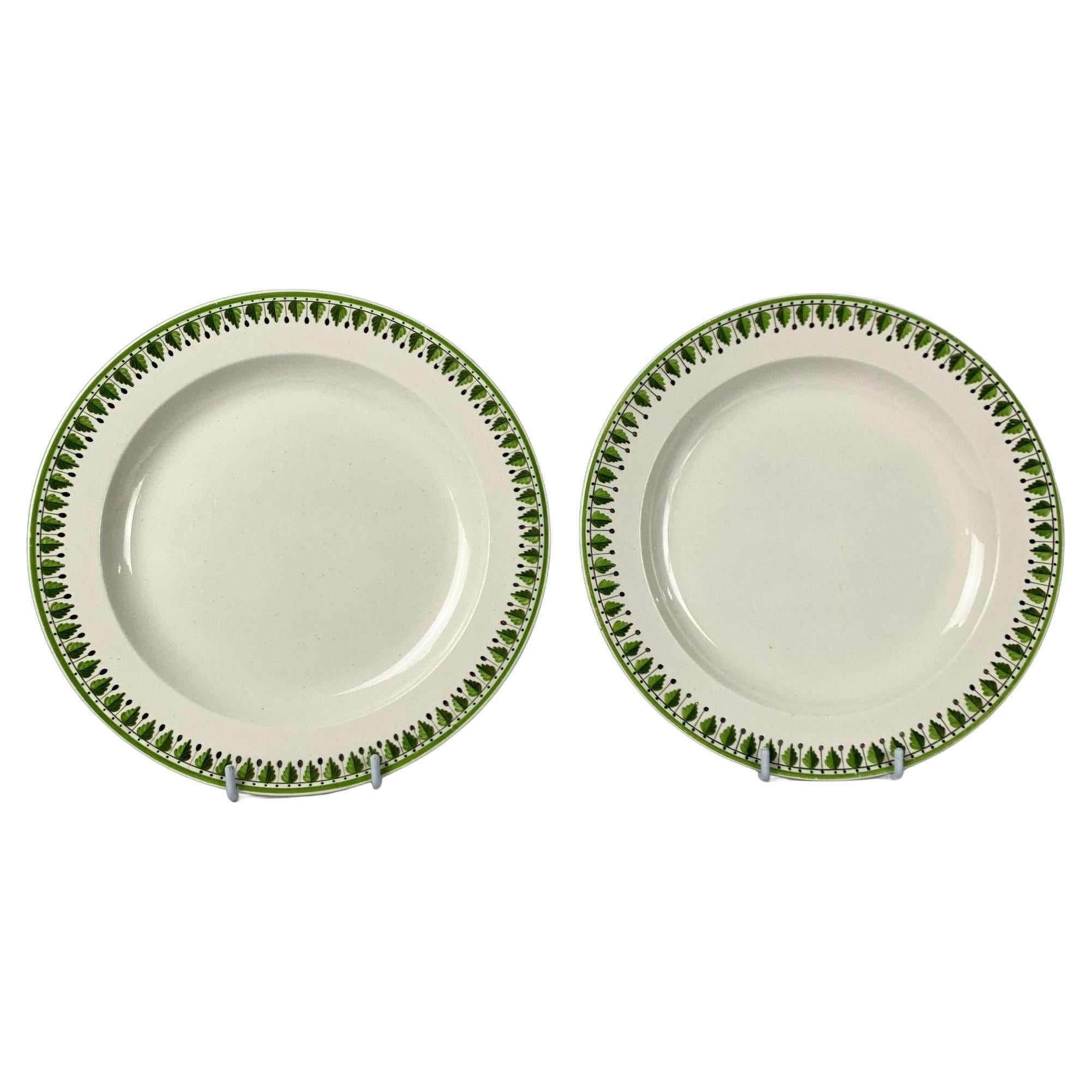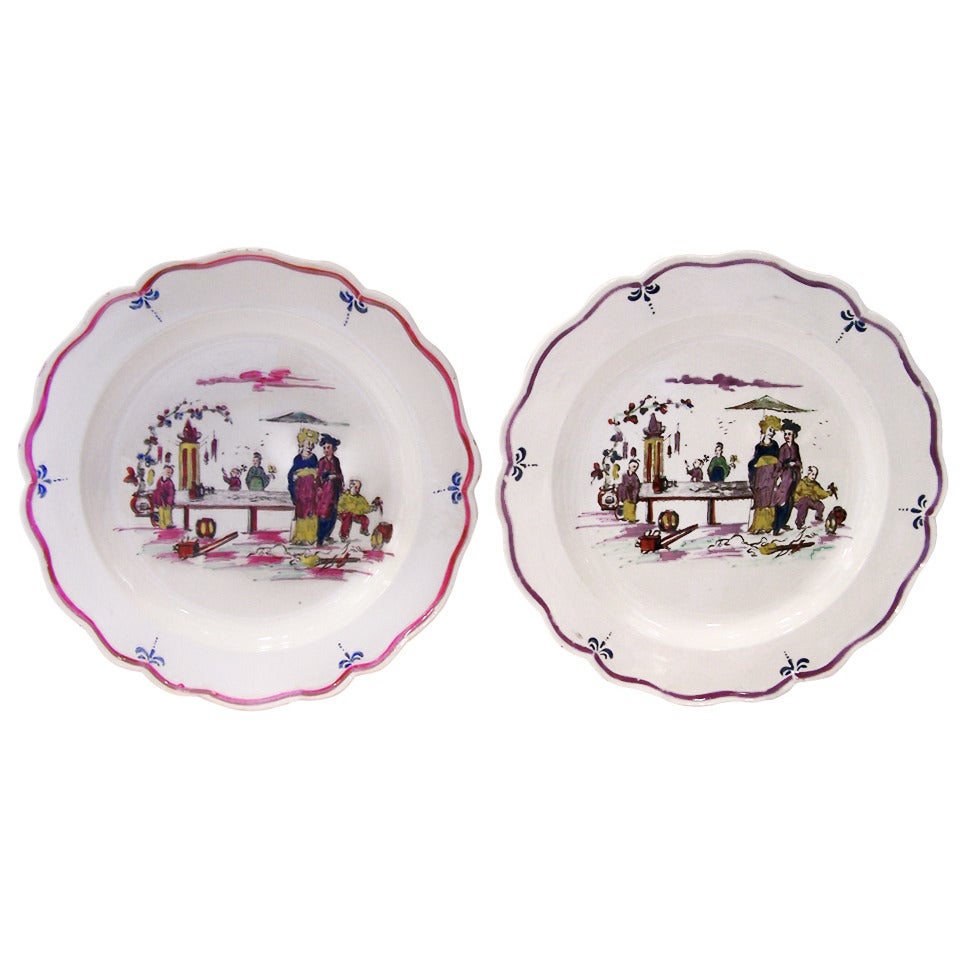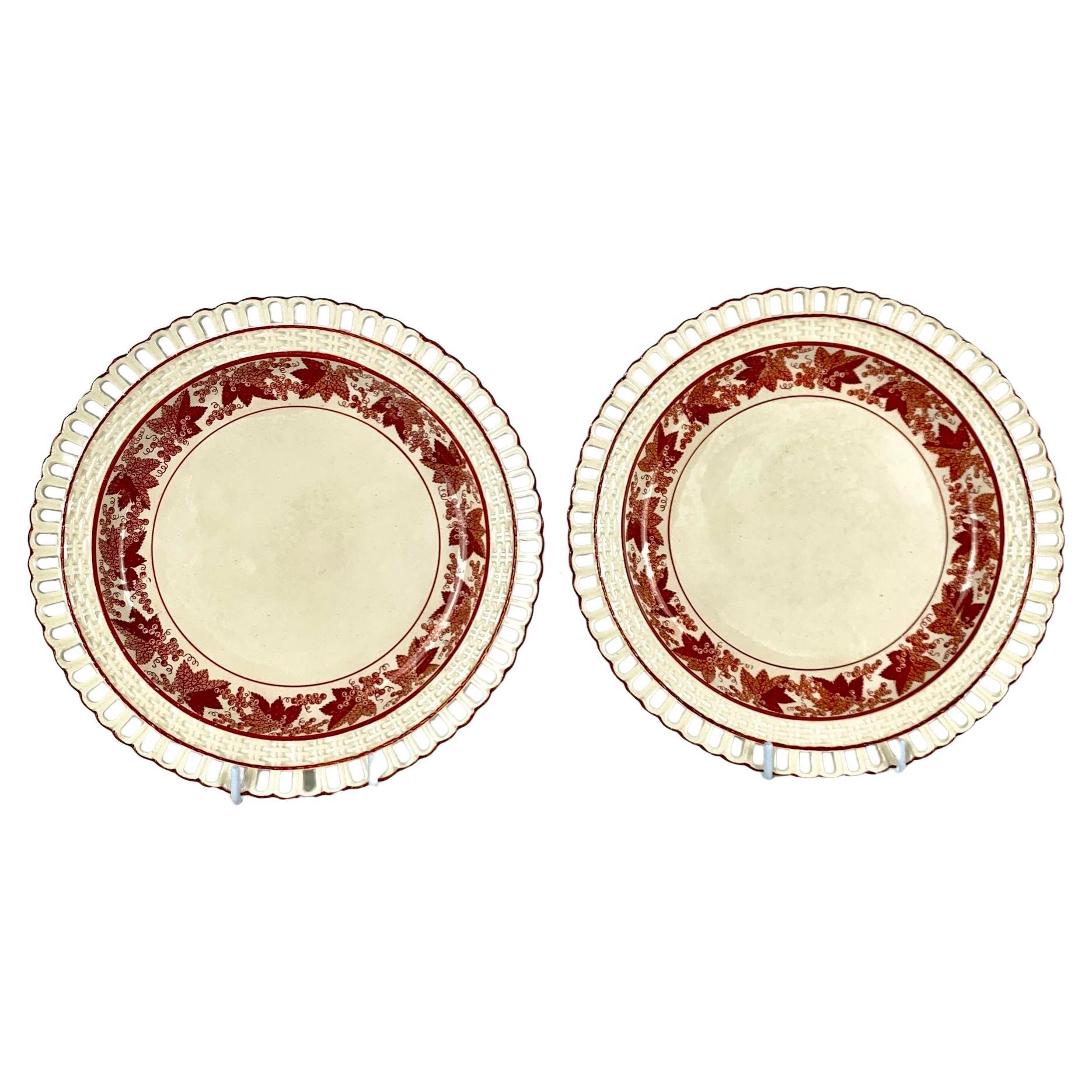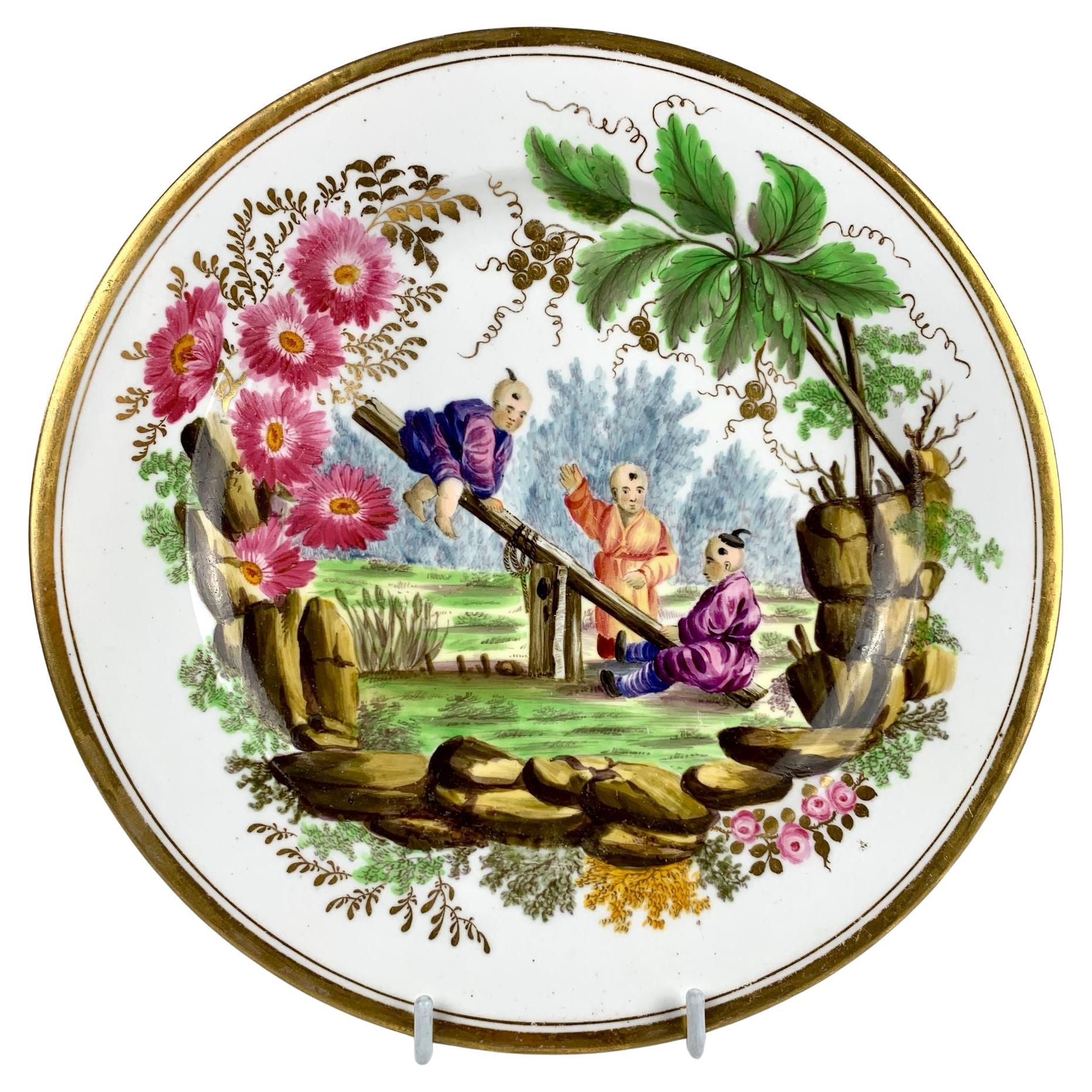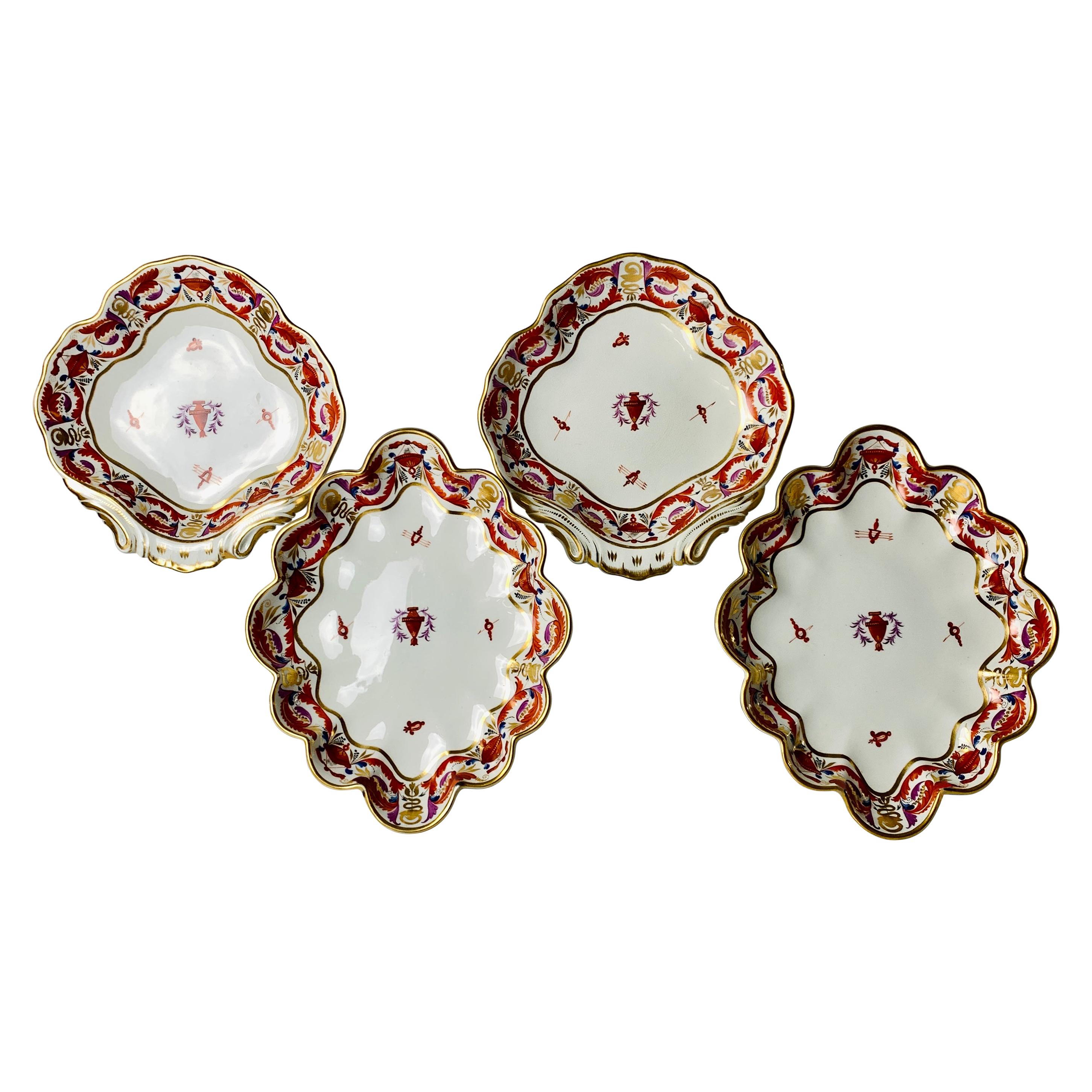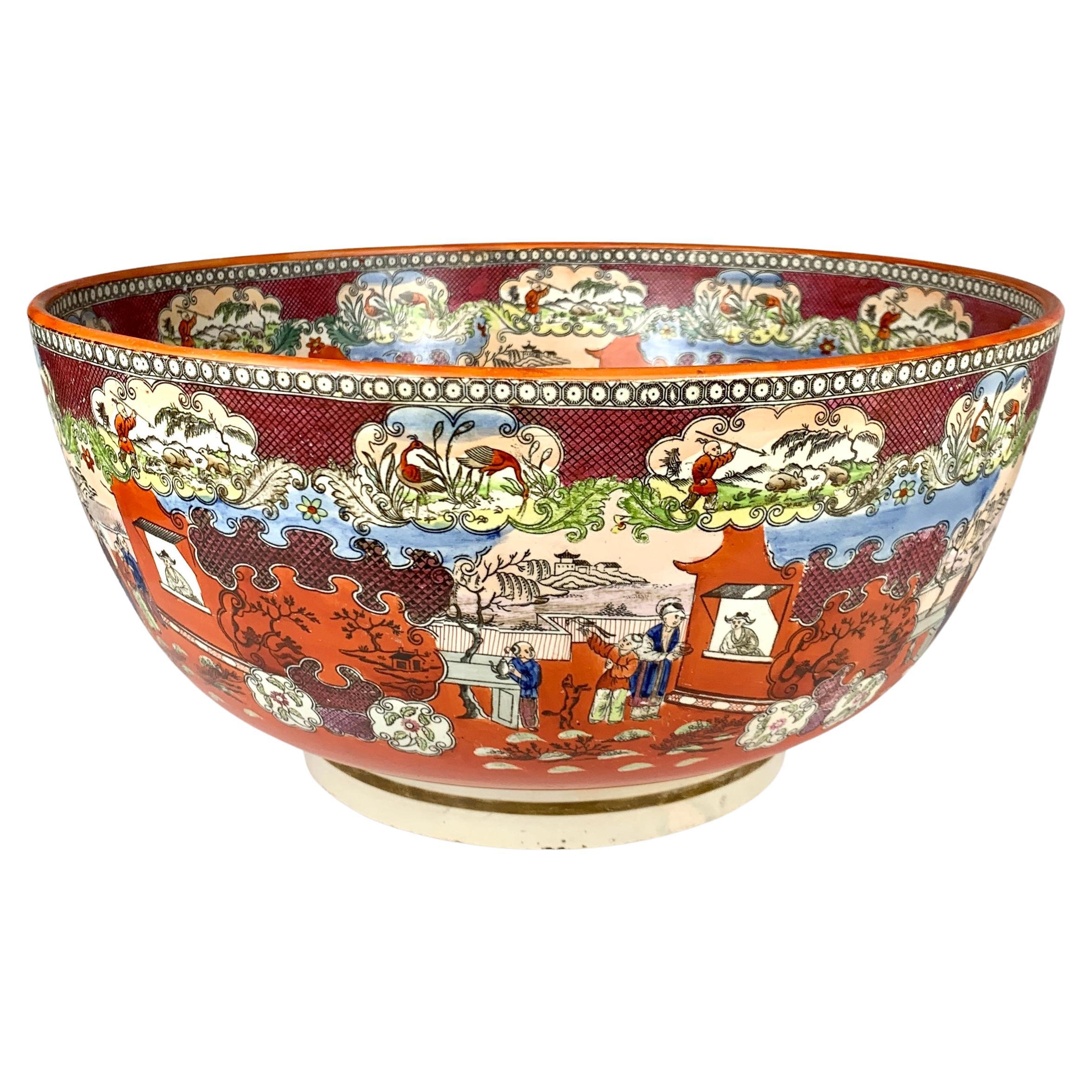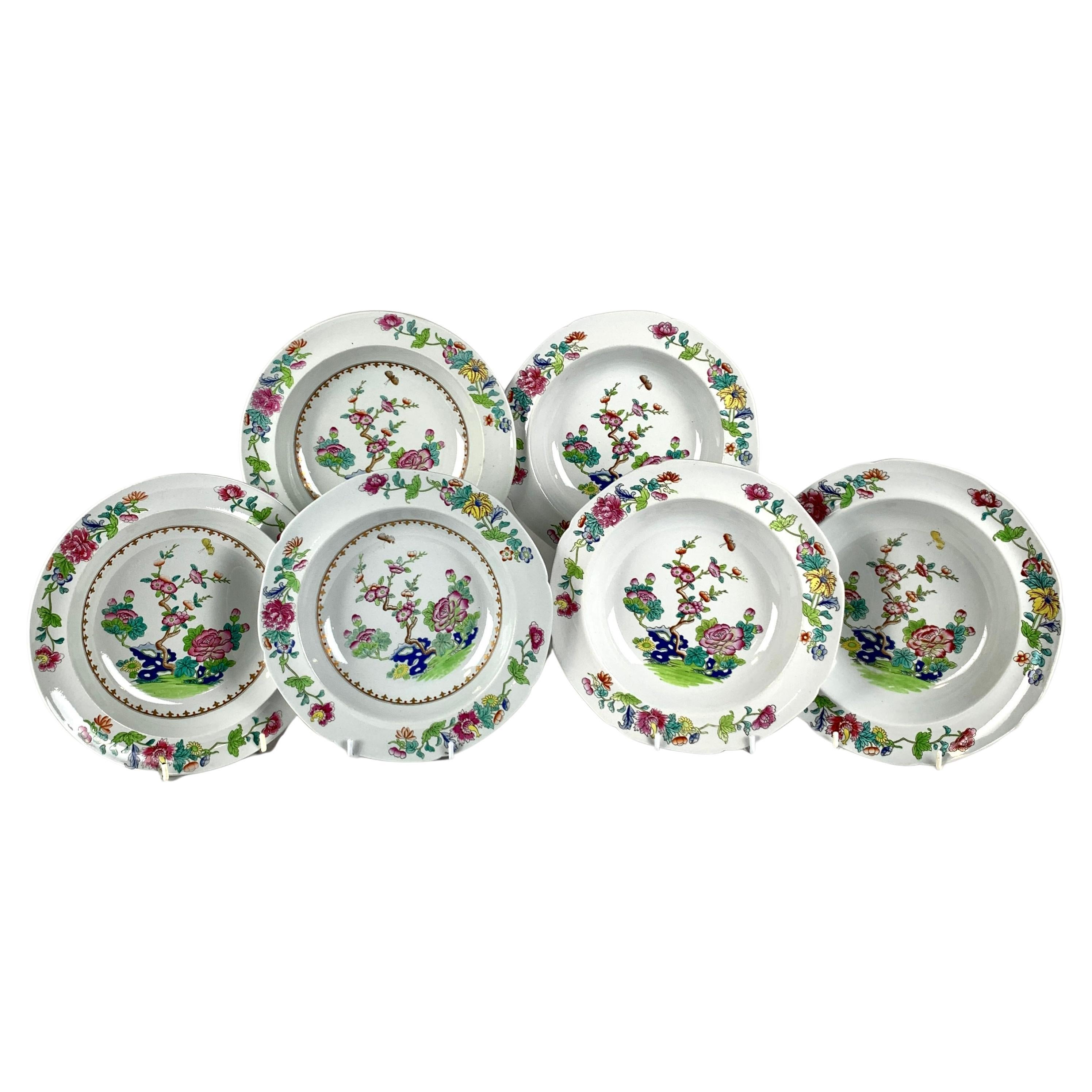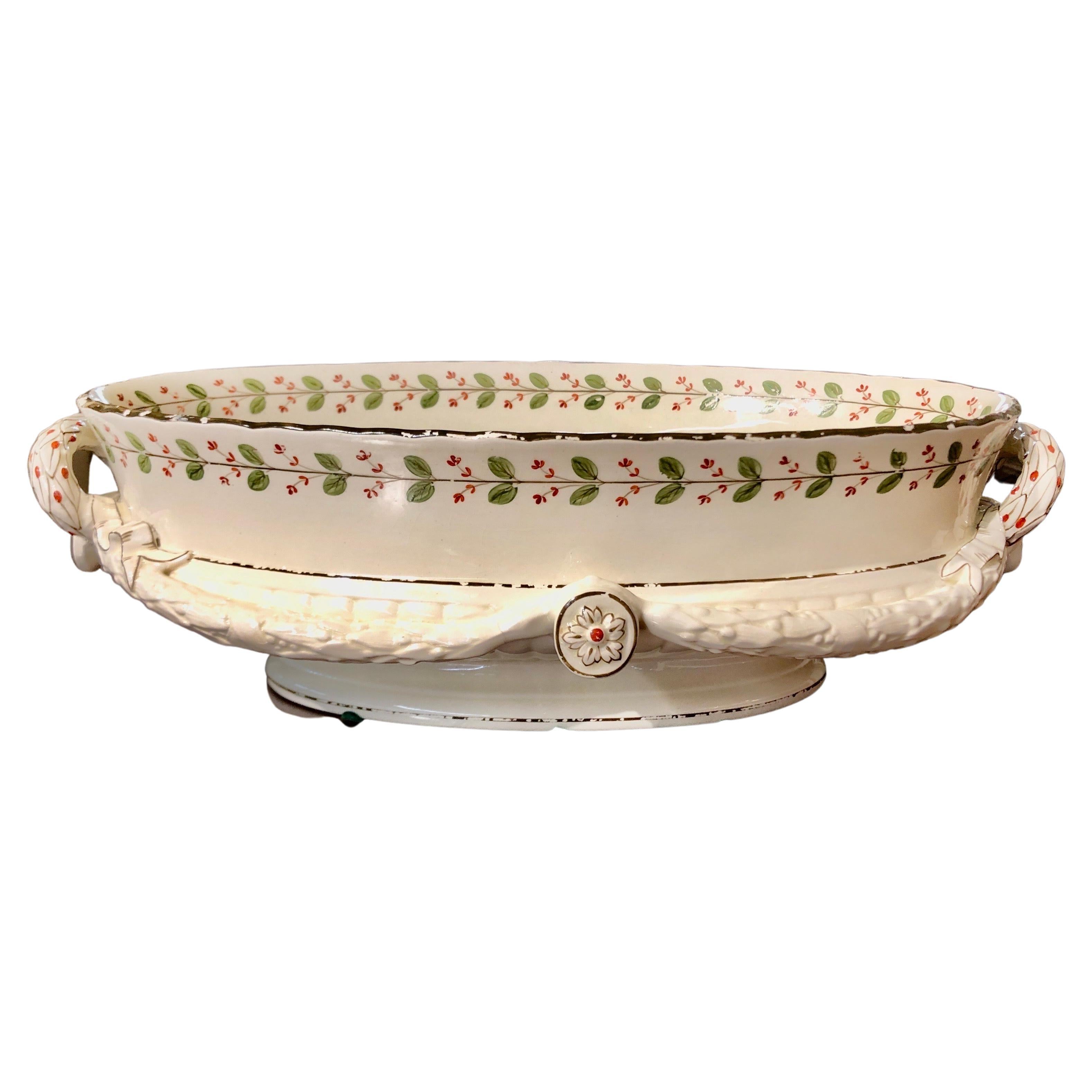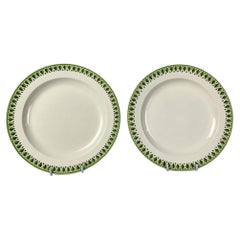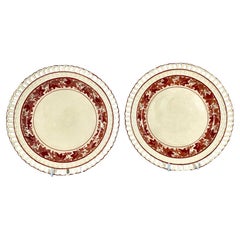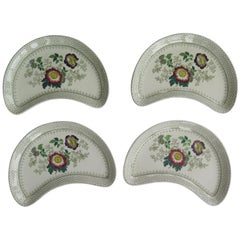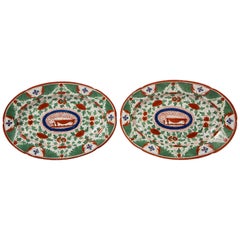
Pair of Crazy Cow Antique Creamware Dishes England circa 1810
View Similar Items
Pair of Crazy Cow Antique Creamware Dishes England circa 1810
About the Item
- Creator:Minton (Maker)
- Dimensions:Height: 1.25 in (3.18 cm)Width: 7.5 in (19.05 cm)Depth: 10.25 in (26.04 cm)
- Style:Chinoiserie (Of the Period)
- Materials and Techniques:
- Place of Origin:
- Period:
- Date of Manufacture:circa 1820
- Condition:
- Seller Location:Katonah, NY
- Reference Number:1stDibs: LU866513044292
Minton
Pottery is one of the oldest decorative art forms, and Minton is one of its historical masters. For more than 250 years, the English company was a premier producer of porcelain and ceramic wares. Its factory was known for detailed and brightly colored Victorian tableware, including dinner plates and serving pieces.
Thomas Minton founded the Minton factory in 1793 in Stoke-upon-Trent, England. It initially made earthenware but introduced bone china in 1798. When Minton died in 1836, the company passed to his son, Herbert Minton. The younger Minton was a savvy businessman with an eye for design. He introduced glossy majolica earthenware to the factory’s repertoire and hired skilled artists and designers like Augustus Welby Northmore Pugin and Albert-Ernest Carrier-Belleuse, boosting the company’s reputation.
In 1851, Minton debuted its majolica at the Great Exhibition in London. It became a royal family favorite and was even used to tile the Royal Dairy at Windsor Home Park. Minton majolica was also displayed on the monumental Saint George and the dragon fountain at the 1862 London International Exhibition.
Colin Minton Campbell, a nephew of Herbert Minton, took over the family business in 1858. He led the company to the head of the 1870s English art pottery movement. In the 1890s, French porcelain artist Marc-Louis Solon helped modernize Minton with his Art Nouveau designs.
Minton ceased operating as an independent company when it merged with Royal Doulton Tableware Ltd. in 1968. It was the end of an era, but not the end of widespread appreciation for Minton ceramics.
In 1982, the ”English Majolica” exhibition at the Cooper Hewitt, Smithsonian Design Museum featured 75 Minton pieces. When the Metropolitan Museum of Art reopened its British Galleries in 2020, it included a display of three colorful Minton majolica bird sculptures. Minton pottery was also on display from September 2021 to January 2022, along with other English pottery, at the Bard Graduate Center’s ”Majolica Mania” exhibition.
On 1stDibs, find exquisite Minton serveware, decorative objects, wall decorations and more.
- Pair Wedgwood Creamware Dishes England Circa 1810By WedgwoodLocated in Katonah, NYMade by Wedgwood in England circa 1810, this pair of creamware dishes features a neoclassical border decorated with a band of green acanthus leaves separated by black darts. Several ...Category
Antique Early 19th Century English Neoclassical Decorative Dishes and Vi...
MaterialsCreamware
- Pair Creamware Dishes 18th Century England Painted in Pink & Purple Made c-1785Located in Katonah, NYThis is a pair of English creamware dishes from the 18th century, created around 1785. The plates display a lovely chinoiserie scene with women selecting accessories. The scene depic...Category
Antique Late 18th Century English Chinoiserie Ceramics
MaterialsCreamware
- Pair Creamware Dessert Dishes with Sepia Decoration England Circa 1810Located in Katonah, NYThis pair of creamware dessert dishes dates to the early 19th century. Made circa 1810, the dishes have beautiful decoration on their wide borders. The borders consist of three conce...Category
Antique Early 19th Century English Decorative Dishes and Vide-Poche
MaterialsCreamware
- Three Wedgwood Creamware Oval Dishes England Circa 1830By WedgwoodLocated in Katonah, NYMade by Wedgwood in England circa 1830, this group of three oval dishes is lovely creamware with a simple, elegant design. Creamware is cream-colored, refined earthenware. It was cre...Category
Antique Early 19th Century English Neoclassical Decorative Dishes and Vi...
MaterialsCreamware
- Antique Porcelain Chinoiserie Plate Hand Painted by Minton England Circa 1810By MintonLocated in Katonah, NYMade in England circa 1810, this Minton porcelain dish is a masterpiece of English Regency chinoiserie. The hand-painted scene exhibits vibrant colors, intricate details, and a playf...Category
Antique Early 19th Century English Chinoiserie Decorative Dishes and Vid...
MaterialsPorcelain
- Two Pairs of Derby Porcelain Shaped Dishes Hand-Painted England, Circa 1810By Crown DerbyLocated in Katonah, NYThis group of four Derby Porcelain dishes was hand-painted in England circa 1810. An exquisite design of curling feathers and neoclassical objects d...Category
Antique Early 19th Century English Regency Decorative Dishes and Vide-Poche
MaterialsPorcelain
- Set of FOUR Victorian Masons Ashworths Ironstone Supper Dishes, circa 1890By Mason's IronstoneLocated in Lincoln, LincolnshireThese are a good and unusual set of four ironstone supper dishes from the Mason's Factory when it was owned by the Ashworth Brothers. From about 1861 the Mason's Company traded under...Category
Antique Late 19th Century English Late Victorian Decorative Dishes and V...
MaterialsIronstone, Pottery
- Rare Large Antique English Early 19th C. Wedgwood Queensware 'Creamware' BowlBy WedgwoodLocated in Charleston, SCRare & Important Antique English Large Wedgwood Queensware (Creamware) Centerpiece with influences by Robert Adam represented by the swags and fest...Category
Antique Early 19th Century English George III Decorative Bowls
MaterialsEarthenware
$1,100 Sale Price20% Off - Vintage Danish Ceramic Dishes by Søholm 1960s, Set of 2By Søholm StentøjLocated in Asaa, DKVintage Danish ceramic dishes by Søholm 1960s, set of 2 Matching set of stoneware platters from Danish manufacturer Søholm on the island of Bornholm. Nature inspired decorations in e...Category
Vintage 1960s European Mid-Century Modern Ceramics
MaterialsCeramic
- Two Pairs of Italian Maiolica Baskets, circa 1780By Antonio FerrettiLocated in Milano, ITTwo pairs of maiolica baskets Antonio Ferretti Manufacture Lodi, circa 1770-1790 Maiolica polychrome decorated “a piccolo fuoco” (third fire). Measures: A) Height 3.54 x 6.69 x 9.84 in (9 x 17 x 25 cm); B) Height 3.93 x 7.48 x 11.02 in (10 x 19 x 28 cm). Total weight 4.85 lb (2.200 kg) State of conservation: A) One of the smaller baskets has some areas of restoration, the other slight chipping from use; B) One of the larger baskets is intact and the other shows a clearly glued break. The mold with which the baskets were forged simulates a wicker weave. The two larger works have high, vertical walls, with branch-shaped handles penetrating the weave. The painted decorations, small polychrome flowers applied only externally, highlight the points where the weaves intersect. The decision to leave the center of the basket devoid of decoration is highly unusual, but given the size and complexity of the shape, as well as the quality of the enamel, it is possible to hypothesize that it represents a precise choice in manufacturing or for a particular client. The two smaller baskets have small, twisted handles and, on the outside, reproduce more decisively the characteristic wicker weave, obtained through thin molded lines. The interior exhibits a rich, typical decoration of naturalistic flowers: a bunch centered around a main flower and secondary stems accompanied by small “semis”. The exterior of these works is also adorned with small little flowers where the weaves intersect. The size and morphological characteristics of the baskets confirm their attribution to the Lodi factory of Antonio Ferretti between 1770 and 1790, during its most successful period; by this point his original reworking of the "Strasbourg" decoration, known as "old Lodi", had achieved great fame even outside Italy. This decorative choice represented a strong point of the Lodi factory, which established itself thanks to the vivid nature of the colors made possible by the introduction of a new technique perfected by Paul Hannong in Strasbourg and which Antonio Ferretti introduced in Italy. This production process, called “piccolo fuoco” (third fire), allowed the use of a greater number of colors than in the past; in particular, the purple of Cassius, a red made from gold chloride, was introduced. Its use allowed for many more tones and shades, from pink to purple. The Ferretti family had started their maiolica manufacturing business in Lodi in 1725. The forefather Simpliciano had started the business by purchasing an ancient furnace in 1725 and, indeed, we have evidence of the full activity of the furnaces from April of the same year (Novasconi-Ferrari-Corvi, 1964, p. 26 n. 4). Simpliciano had started a production of excellence also thanks to the ownership of clay quarries in Stradella, not far from Pavia. The production was so successful that in 1726 a decree of the Turin Chamber came to prohibit the importation of foreign ceramics, especially from Lodi, to protect internal production (G. Lise, La ceramica a Lodi, Lodi 1981, p. 59). In its initial stages, the manufacture produced maolicas painted with the “a gran fuoco” (double fire) technique, often in turquoise monochrome, with ornamentation derived from compositional modules in vogue in Rouen in France. This was also thanks to the collaboration of painters like Giorgio Giacinto Rossetti, who placed his name on the best specimens next to the initials of the factory. In 1748 Simpliciano made his will (Gelmini, 1995, p. 30) appointing his son Giuseppe Antonio (known as Antonio) as universal heir. After 1750, when Simpliciano passed away, Antonio was directly involved in the maiolica factory, increasing its fortunes and achieving a reputation on a European level. Particularly important was the aforementioned introduction in 1760 of the innovative “a piccolo fuoco” (third fire) processing, which, expanding the ornamental repertoire with Saxon-inspired floral themes, could commercially compete with the German porcelains that had one of its most renowned offerings in the naturalistic Deutsche Blumen. Antonio Ferretti understood and promoted this technique and this decoration, proposing it in a fresher and more corrective version, less linked to botanical tables...Category
Antique 1770s Italian Neoclassical Ceramics
MaterialsMaiolica
- Set of 4 Ceramic Cup or Dishes Brown Grey and Blue Stoneware Ceramic P. DiganBy Pierre DiganLocated in Neuilly-en- sancerre, FRPierre Digan Elegant stoneware ceramic set of 4 bowls or dishes by the French artist. 4 differents ceramic glazes colors, brown, green, blue and grey. Original set realized...Category
20th Century French Mid-Century Modern Decorative Dishes and Vide-Poche
MaterialsCeramic
- Set of Three Ceramic Green and White Dishes Cup by Keramos Midcentury DesignLocated in Neuilly-en- sancerre, FRKeramos Set of three freem forms ceramic dishes by Keramos, circa 1960. Elegant forms and white and green colors. Original good conditions. Dimensions: 5 x 13 x 13cm.Category
Mid-20th Century French Mid-Century Modern Ceramics
MaterialsCeramic
